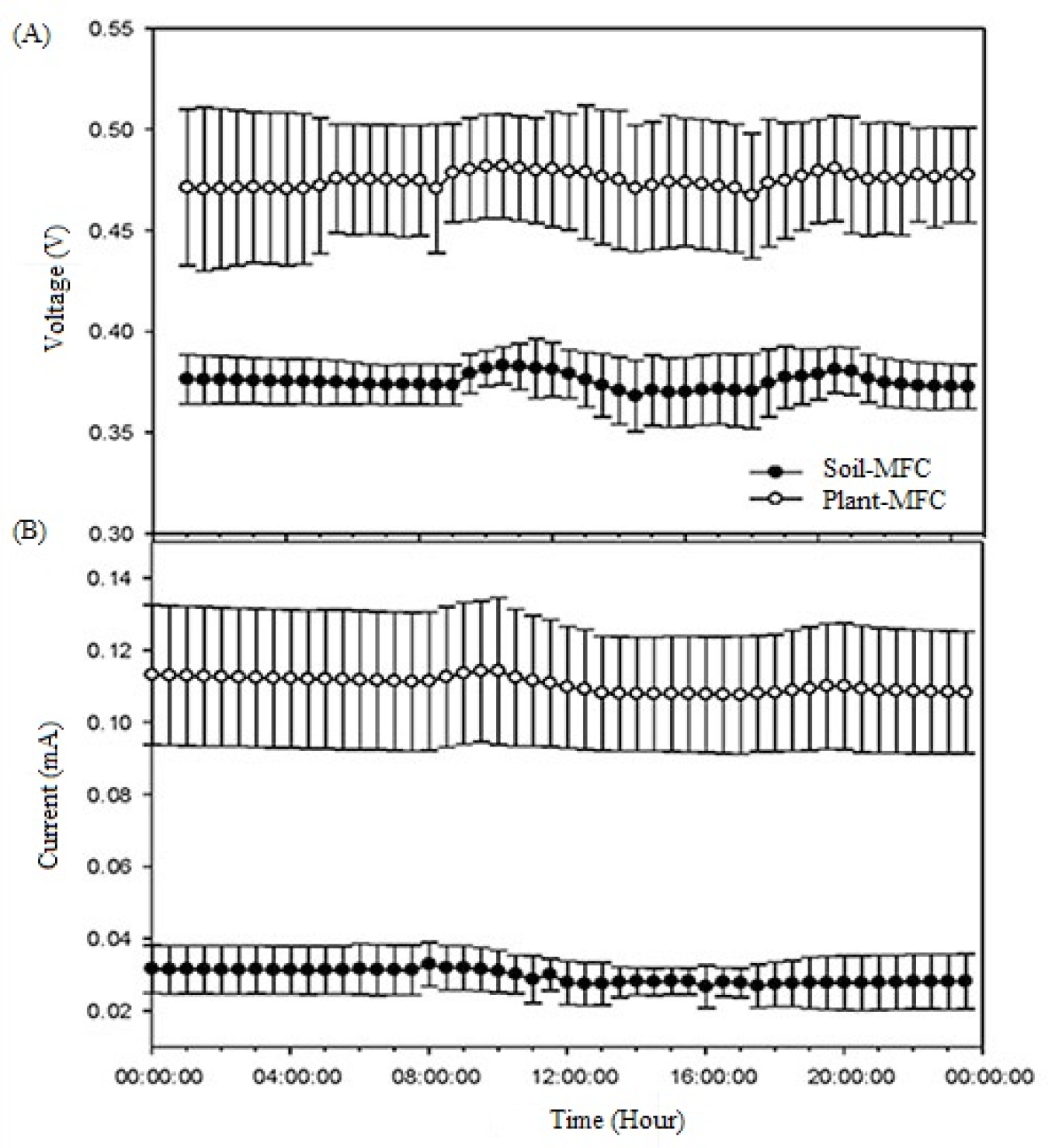Abstract
The purpose of this study was to investigate the utility of an ornamental plant, Spathiphyllum spp., as a plant-microbial fuel cell (Plant MFC) to produce voltage and current. This study also evaluated the effect of the Plant MFC on water use efficiency and plant growth. The experiment used four experimental groups: used MFC without plant (Soil MFC), used MFC with plant (Plant MFC), unused MFC without plant (Soil Pot), and unused MFC with plant (Plant Pot). Plant MFC generated higher voltage and current levels than Soil MFC. The average voltage of Plant MFC and Soil MFC was 0.475 V and 0.375 V, respectively, and the average current was 0.110 mA and 0.030 mA, respectively. Plant MFC using Spathiphyllum spp. produced a constant voltage output, with a deviation of 0.027 V during the four-month indoor experiment. The difference between the maximum and minimum voltage during the day was as small as 0.015 V, which supports the utility of Plant MFC as a stable power source. Volumetric soil moisture content, chlorophyll fluorescence (Fv/Fm), photosynthesis rate, leaf area, fresh weight, and dry weight of Plant MFC and Plant Pot were measured. There was no significant difference in any values, and volumetric soil moisture and plant growth were not affected by the utilization of Plant MFC. Thus, a Plant-MFC using Spathiphyllum spp. can play the same ornamental role as conventional plants and at the same time be used as a sustainable bioelectricity source.
Keywords:
bioelectricity; energy harvesting; photosynthetic MFC; renewable energy; sustainable energy

 Thumbnail
Thumbnail
 Thumbnail
Thumbnail
 Thumbnail
Thumbnail


